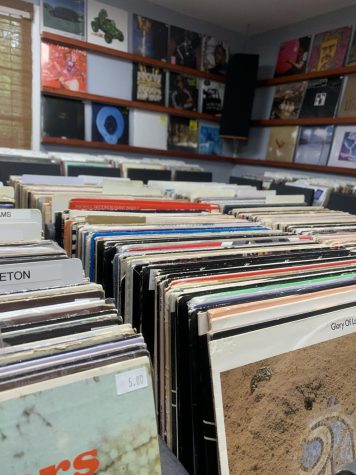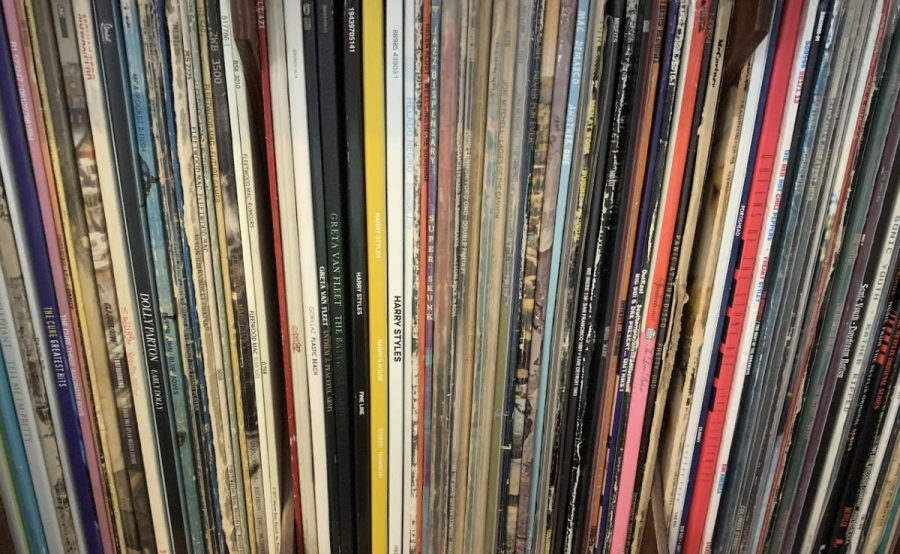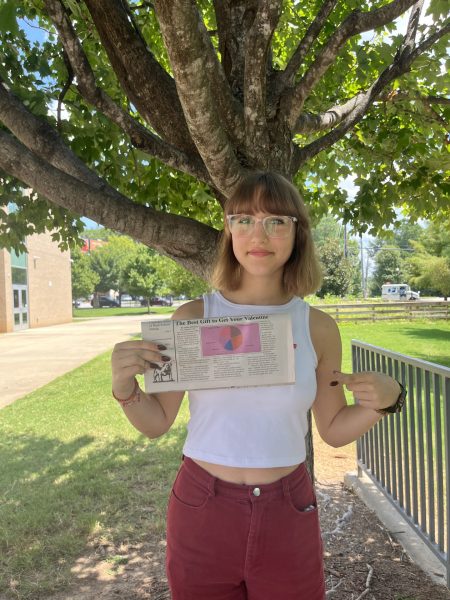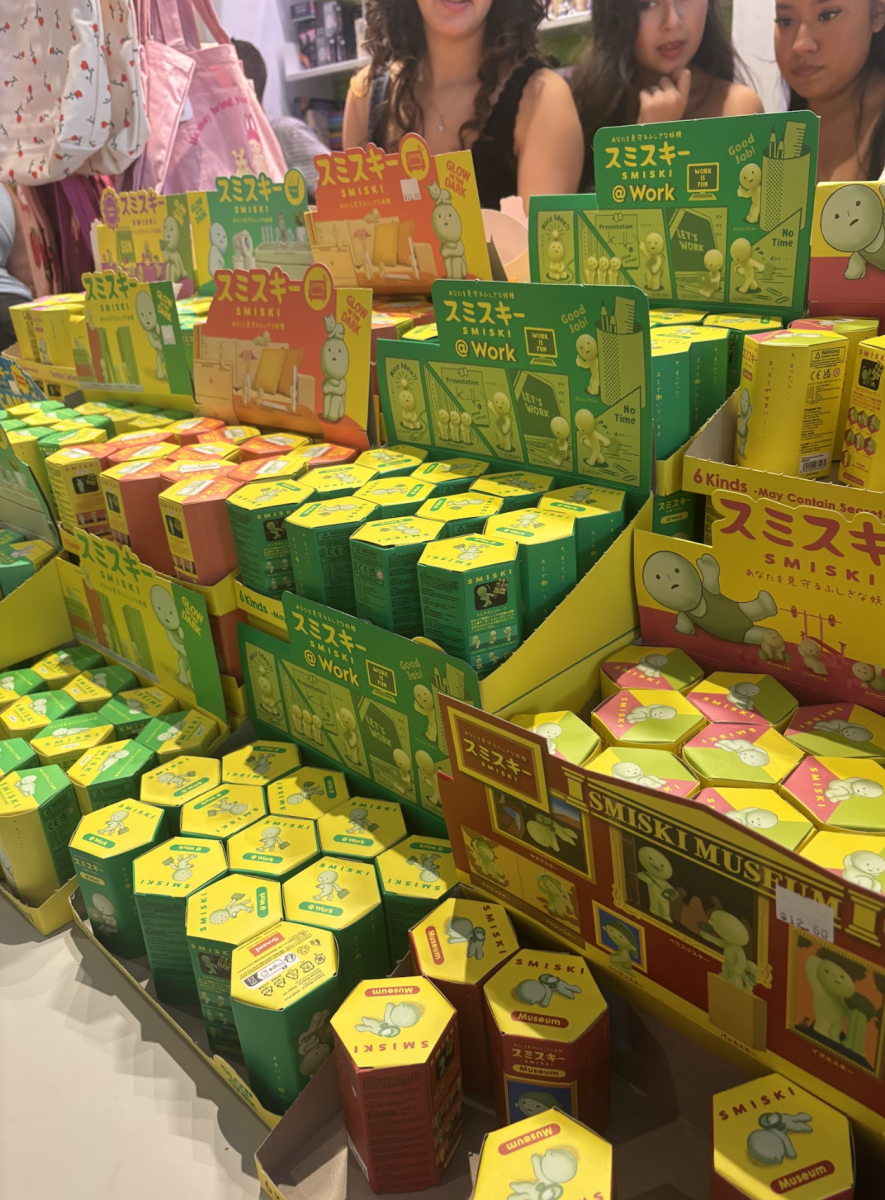A Record Collectors Guide to Valuable Vinyl
September 13, 2022
If you are anything like me, you have been listening to CDs, cassettes, and records, since you were little. And if you are still reading this, you might know that these physical forms of media can hold value, some more than others.
While streaming music is now so easy, you can listen through Apple Music, Spotify, Amazon Music, and many others, there is something about dropping the needle, inserting a CD, or rewinding a cassette, that can give listening to music even more value and meaning.
Just as there is a recent popularity in going thrifting for vintage clothes, vintage music medium sales have skyrocketed in recent years. With sales at $1 billion, 2021 was the biggest year in vinyl since 1986, according to TPR.org.
Though the process of collecting may seem intimidating, as far as spending goes, you may wonder “what records are worth buying?,” or “should I buy a cheap or expensive turntable?” I am writing this article to address any questions that you could possibly have, and more. I will do my best to guide you on how to find the record you want for a good value, how to create a high quality collection, and the steps to building a future long term investment with your collection.
The basics
If you are looking to start a vinyl collection, you need to be committed. Although “vintage” music mediums like vinyl are very cool, they are, to be honest, fairly inconvenient. If you listen to music every day, having a streaming service subscription will be good because you will not be able to listen to your records 24/7. Another thing about collecting vinyl is that it is expensive and time consuming, but with this guide you will be able to find records that will increase in value and contribute to a long term investment. And while value is important, you should make sure that the records are valuable to you. When collecting records make sure you have the records you enjoy and enjoy listening to. Lastly, when collecting vinyl be prepared to get your hands dirty! Records are very dusty, but the thrill of the hunt and the feeling of flipping through countless records until finding (the) one can be one of the best parts of adding records to your collection.
Turntable tips
After you have decided whether or not you want to continue to pursue having a record collection, the time comes to buy a turntable. You may ask: “what brand should I get my record player from?” or “this record player is $30, and this one is $300, so which is worth it?” I am about to answer these questions. If you shop at Target, Urban Outfitters, or on Amazon, you will see many people hyping up the Crosley turntables because they look cool or have a “vintage aesthetic.” Do not fall for these tricks. Although Crosley has a reputation, it is not a good one, and that is for a reason. Their record players tend to break often, and they can overall damage your records. Every time you play a record, the needle or stylus of the record player will wear down the record, and with the cheap quality of the stylus on Crosley turntables, the damage can be worse than what a high quality player would create. While I can’t answer every question about record players, a good guide and reference for finding a good one is: turntablelab.com.

Perfection Vs. Paltriness
When looking for a new record, you will want to know its value, condition, and rarity. Value does not always have to refer to monetary value. The most valuable records can change from person to person depending on how much they enjoy listening to that album. The term value is subjective when it comes to your personal collection of vinyl. Value can also be increased by its condition, for example: if a record is brand new, unplayed, and still sealed, the condition would be mint/sealed (M/M+). If a record has a spill on it, is warped, or is scratched, the condition will be considered good/poor (G/P). These ratings can continue and vary depending on the condition of the vinyl itself or the condition of the sleeve of the record. The value of the record can also be determined by the rarity of the pressing. Privately pressed records are very rare because there might only be a limited number of records pressed under a small private label. Colored pressings can also increase value and rarity because commonly, colored vinyl will be a limited edition release. Each record has an etching/engraving on the run off groove of a record. This will help determine the pressing number and release date. Records can be laser-etched or hand-etched, when a record is hand-etched there might be a special engraving depending on whoever etched the land area (run off groove) of the vinyl, and this can be an increasing factor in rarity. If a record is signed by the band/artist value can increase tremendously. In 1969, to save money, RCA Records began using Dynaflex, a thin vinyl formula, rather than the typical vinyl material. Dynaflex records were so thin, they would almost literally flop back and forth when held. These types of records have not been pressed since then, so if you find one it might have more value due to its rarity. A useful tool to determine rarity and value based on condition is the app Discogs. You can search millions of pressings and determine value easily.
Caring for your collection
After building the foundation of your collection, a major step is caring for your precious vinyl. Whether the record is new or old, it needs to be cared for to prevent skipping, warping, and reduced sound quality. From brushes to sleeves to storage, every factor of how you store your record to how often you clean it matters when it comes to keeping your vinyl mint. A good guide for careful vinyl care is: rollingstone.com
The end
I hope with this guide with given resources, you feel ready to create your own collection. If you learned something, great! If you didn’t, that’s cool, too. Always remember, enjoy what you listen to and be careful when “dropping the needle,” because records are a delicate thing!











